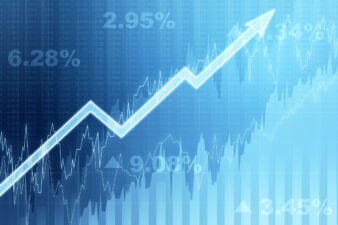The CRA tax-reporting deadline is coming up fast on June 1 for many Canadians. The self-employed people’s deadline is June 15. But everyone must pay the taxes they owe to the CRA by September 1.
If you want to pay lower taxes to the CRA in the future, make sure you are taking full advantage of your Tax-Free Savings Account (TFSA). You can use it in many different ways.
TFSA as an emergency fund
TFSA withdrawals are tax-free. As a result, some Canadians use a portion of their TFSA contribution room as a high-interest rate account or short-term GICs. You won’t earn much from this, but you can withdraw anytime with no tax penalty.
Personally, I save my TFSA room for investing. To really make your TFSA work hard for you, consider it as an investing account and not a savings account.
How to make a TFSA work for you
You can get much more out of your TFSA when you focus on investment returns. That is, you can generate incredible tax-free growth or income in your TFSA.
TFSAs are very flexible. Other than cash and GICs, you can invest in government and corporate bonds, stocks, mutual funds, and exchange-traded funds (ETFs).
Technology offers above-average growth. One ETF you’ll want to check out is BMO Nasdaq 100 Equity Hedged to CAD Index ETF (TSX:ZQQ). It’s the TSX version of NASDAQ:QQQ that protects against the Canadian dollar going up against the U.S. dollar. From a foreign exchange basis, now is a better time to buy ZQQ versus QQQ because the greenback is strong.
QQQ includes 100 of the largest domestic and international non-financial companies listed on the Nasdaq based on market capitalization. It is re-balanced every three months and reconstituted every year.
The ETF has a big tech component. Its top holdings are quality names like Microsoft, Apple, Amazon, Facebook, and Alphabet. Together, they make up about 46% of the fund.
Other components of ZQQ include the sectors of communication services (20% of the fund), consumer cyclical (15%), healthcare (8%), and consumer defensive (5%). All tend to deliver stable growth.
Since most of the world is experiencing an economic downturn due to COVID-19, some Canadian investors may wish to avoid banks that are an important component in the financial sector and are directly impacted by the health of the economy. If so, they’d appreciate what ZQQ offers.
Get stable income from your TFSA
ZQQ doesn’t offer much in terms of yield. Its yield is tiny at 0.4%. To complement ZQQ’s growth, investors can consider utilities, telecoms, banks, and REITs for income.
One utility that looks particularly cheap right now is Capital Power (TSX:CPX). It’s taken a deep dive of 31% since February. Yet the power-generation company reaffirmed its financial and dividend guidance for the year in Q1.
Specifically, this year, it targets adjusted EBITDA of about $960 million and adjusted funds from operations of $525 million with sustaining capital spending of $95 million. It also foresees increasing its dividend by 5-7% per year through 2022.
About 80% of Capital Power’s adjusted EBITDA are under long-term power-purchase agreements with a remaining term of 10 years. Additionally, the utility has strong liquidity with $1 billion credit facilities, of which it has only drawn 10%. The utility also has an investment-grade S&P credit rating of BBB-.
Analysts think Capital Power stock has no downside risk. Even better, the average 12-month target suggests upside potential of 29%. Meanwhile, the utility provides an incredible yield of 7.4% at under $26 per share.
In summary, Capital Power is an excellent choice for investors seeking value, income, and stable growth of about 6% through 2022.








